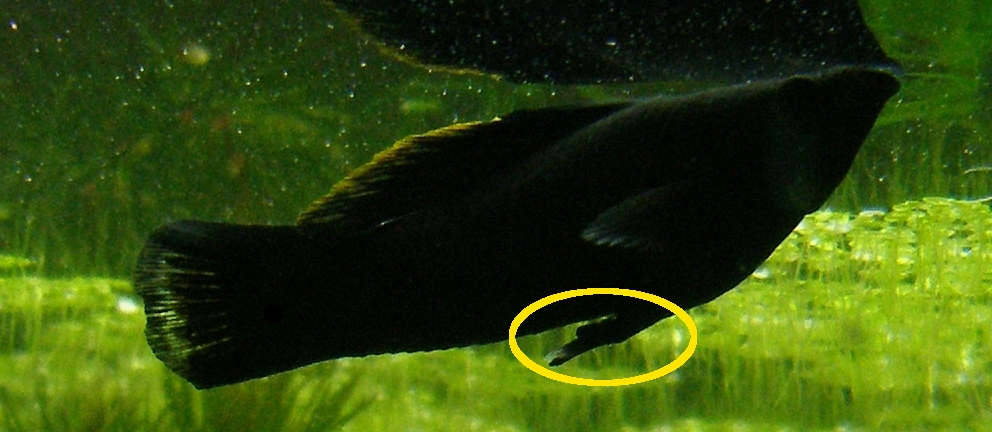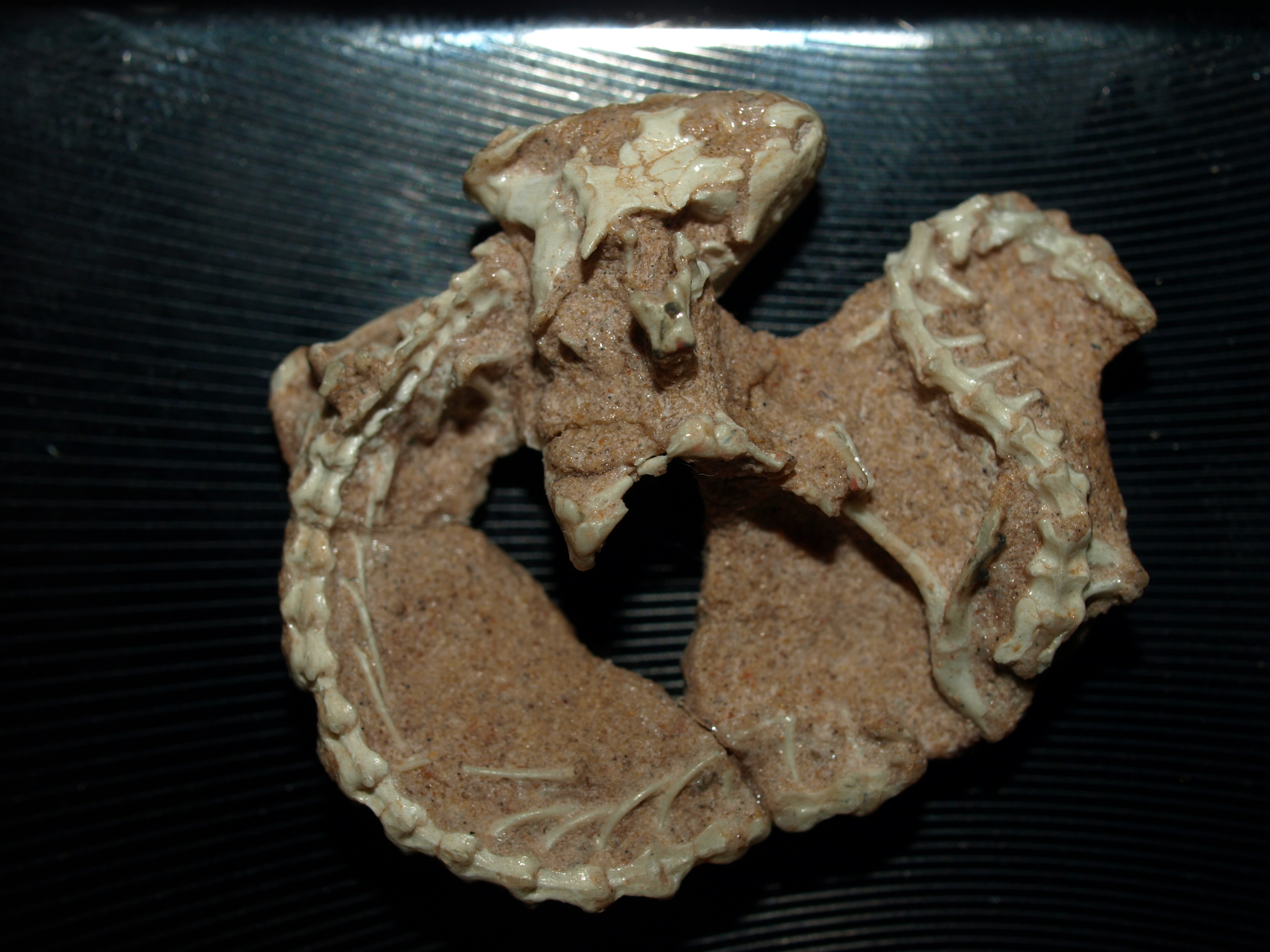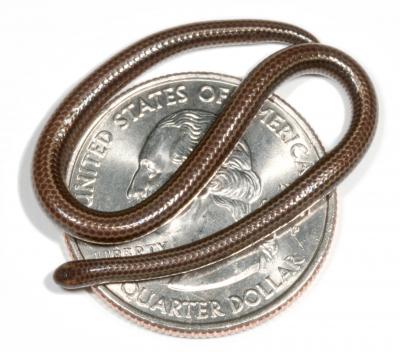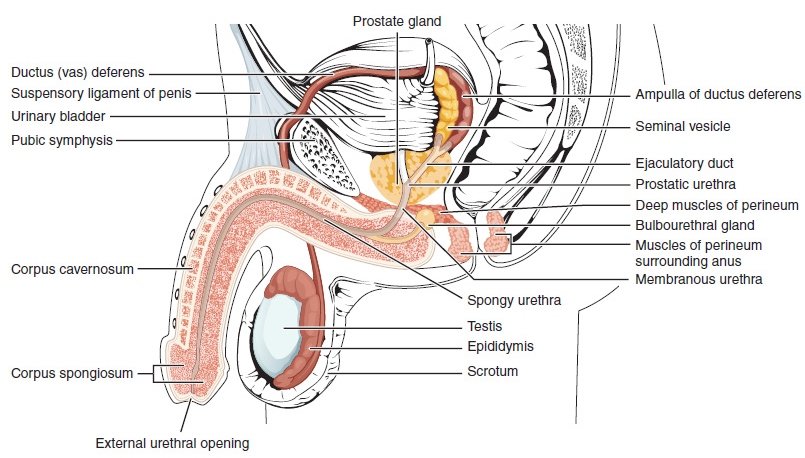|
Hemipenes
A hemipenis (plural hemipenes) is one of a pair of intromittent organs of male squamates (snakes, lizards and worm lizards). Hemipenes are usually held inverted within the body, and are everted for reproduction via erectile tissue, much like that in the human penis. They come in a variety of shapes, depending on species, with ornamentation, such as spines or hooks. The female homologue is the hemiclitoris. Background The hemipenis is the intromittent organ of squamata, which is the second largest order of vertebrates with over 9000 species distributed around the world. They differ from the intromittent organs of most other amniotes such as mammals, archosaurs and turtles that have a single genital tubercle, as squamates have the paired genitalia remaining separate. Squamate hemipenes also develop from a different cell origin, originating from the same embryonic cells that produce the limbs, whereas mammalian penises arise from the embryonic cells that develop the tail. Evoluti ... [...More Info...] [...Related Items...] OR: [Wikipedia] [Google] [Baidu] |
Intromittent Organ
An intromittent organ is any external organ of a male organism that is specialized to deliver sperm during copulation. Intromittent organs are found most often in terrestrial species, as most non-mammalian aquatic species fertilize their eggs externally, although there are exceptions. For many species in the animal kingdom, the male intromittent organ is a hallmark characteristic of internal fertilization. Species with intromittent organs Invertebrates Molluscs Male cephalopods have a specialized arm, the hectocotylus, which is inserted into the female's mantle cavity to deliver a spermatophore during copulation. In some species, the hectocotylus breaks off inside the female's mantle cavity; in others, it can be used repeatedly to copulate with different females. Arachnids In spiders the intromittent organs are the male pedipalps, even though these are not primarily sexual organs, but serve as indirect mating organs; in the male the pedipalps have hollow, clubbed tip ... [...More Info...] [...Related Items...] OR: [Wikipedia] [Google] [Baidu] |
Snake
Snakes are elongated, limbless, carnivorous reptiles of the suborder Serpentes . Like all other squamates, snakes are ectothermic, amniote vertebrates covered in overlapping scales. Many species of snakes have skulls with several more joints than their lizard ancestors, enabling them to swallow prey much larger than their heads ( cranial kinesis). To accommodate their narrow bodies, snakes' paired organs (such as kidneys) appear one in front of the other instead of side by side, and most have only one functional lung. Some species retain a pelvic girdle with a pair of vestigial claws on either side of the cloaca. Lizards have evolved elongate bodies without limbs or with greatly reduced limbs about twenty-five times independently via convergent evolution, leading to many lineages of legless lizards. These resemble snakes, but several common groups of legless lizards have eyelids and external ears, which snakes lack, although this rule is not universal (see Amphisbae ... [...More Info...] [...Related Items...] OR: [Wikipedia] [Google] [Baidu] |
Squamata
Squamata (, Latin ''squamatus'', 'scaly, having scales') is the largest order of reptiles, comprising lizards, snakes, and amphisbaenians (worm lizards), which are collectively known as squamates or scaled reptiles. With over 10,900 species, it is also the second-largest order of extant (living) vertebrates, after the perciform fish. Members of the order are distinguished by their skins, which bear horny scales or shields, and must periodically engage in molting. They also possess movable quadrate bones, making possible movement of the upper jaw relative to the neurocranium. This is particularly visible in snakes, which are able to open their mouths very wide to accommodate comparatively large prey. Squamata is the most variably sized order of reptiles, ranging from the dwarf gecko (''Sphaerodactylus ariasae'') to the Reticulated python (''Malayopython reticulatus'') and the now- extinct mosasaurs, which reached lengths over . Among other reptiles, squamates are most ... [...More Info...] [...Related Items...] OR: [Wikipedia] [Google] [Baidu] |
Snake
Snakes are elongated, limbless, carnivorous reptiles of the suborder Serpentes . Like all other squamates, snakes are ectothermic, amniote vertebrates covered in overlapping scales. Many species of snakes have skulls with several more joints than their lizard ancestors, enabling them to swallow prey much larger than their heads ( cranial kinesis). To accommodate their narrow bodies, snakes' paired organs (such as kidneys) appear one in front of the other instead of side by side, and most have only one functional lung. Some species retain a pelvic girdle with a pair of vestigial claws on either side of the cloaca. Lizards have evolved elongate bodies without limbs or with greatly reduced limbs about twenty-five times independently via convergent evolution, leading to many lineages of legless lizards. These resemble snakes, but several common groups of legless lizards have eyelids and external ears, which snakes lack, although this rule is not universal (see Amphisbae ... [...More Info...] [...Related Items...] OR: [Wikipedia] [Google] [Baidu] |
Squamata
Squamata (, Latin ''squamatus'', 'scaly, having scales') is the largest order of reptiles, comprising lizards, snakes, and amphisbaenians (worm lizards), which are collectively known as squamates or scaled reptiles. With over 10,900 species, it is also the second-largest order of extant (living) vertebrates, after the perciform fish. Members of the order are distinguished by their skins, which bear horny scales or shields, and must periodically engage in molting. They also possess movable quadrate bones, making possible movement of the upper jaw relative to the neurocranium. This is particularly visible in snakes, which are able to open their mouths very wide to accommodate comparatively large prey. Squamata is the most variably sized order of reptiles, ranging from the dwarf gecko (''Sphaerodactylus ariasae'') to the Reticulated python (''Malayopython reticulatus'') and the now- extinct mosasaurs, which reached lengths over . Among other reptiles, squamates are most ... [...More Info...] [...Related Items...] OR: [Wikipedia] [Google] [Baidu] |
Mammalian Penis
A penis (plural ''penises'' or ''penes'' () is the primary sexual organ that male animals use to inseminate females (or hermaphrodites) during copulation. Such organs occur in many animals, both vertebrate and invertebrate, but males do not bear a penis in every animal species, and in those species in which the male does bear a so-called penis, the penises in the various species are not necessarily homologous. The term ''penis'' applies to many intromittent organs, but not to all. As an example, the intromittent organ of most cephalopoda is the hectocotylus, a specialized arm, and male spiders use their pedipalps. Even within the Vertebrata there are morphological variants with specific terminology, such as hemipenes. In most species of animals in which there is an organ that might reasonably be described as a penis, it has no major function other than intromission, or at least conveying the sperm to the female, but in the placental mammals the penis bears the distal pa ... [...More Info...] [...Related Items...] OR: [Wikipedia] [Google] [Baidu] |
Rattlesnake Hemipenes
Rattlesnakes are venomous snakes that form the genera ''Crotalus'' and ''Sistrurus'' of the subfamily Crotalinae (the pit vipers). All rattlesnakes are vipers. Rattlesnakes are predators that live in a wide array of habitats, hunting small animals such as birds and rodents. Rattlesnakes receive their name from the rattle located at the end of their tails, which makes a loud rattling noise when vibrated that deters predators or serves as a warning to passers-by. Rattlesnakes are the leading contributor to snakebite injuries in North America, but rarely bite unless provoked or threatened; if treated promptly, the bites are seldom fatal. The 36 known species of rattlesnakes have between 65 and 70 subspecies, all native to the Americas, ranging from British Columbia through Ontario in southern Canada, to central Argentina. The largest rattlesnake, the eastern diamondback, can measure up to in length. Rattlesnakes are preyed upon by hawks, weasels, king snakes, and a variety of ... [...More Info...] [...Related Items...] OR: [Wikipedia] [Google] [Baidu] |
Rattlesnake Hemipene
Rattlesnakes are venomous snakes that form the genera ''Crotalus'' and ''Sistrurus'' of the subfamily Crotalinae (the pit vipers). All rattlesnakes are vipers. Rattlesnakes are predators that live in a wide array of habitats, hunting small animals such as birds and rodents. Rattlesnakes receive their name from the rattle located at the end of their tails, which makes a loud rattling noise when vibrated that deters predators or serves as a warning to passers-by. Rattlesnakes are the leading contributor to snakebite injuries in North America, but rarely bite unless provoked or threatened; if treated promptly, the bites are seldom fatal. The 36 known species of rattlesnakes have between 65 and 70 subspecies, all native to the Americas, ranging from British Columbia through Ontario in southern Canada, to central Argentina. The largest rattlesnake, the eastern diamondback, can measure up to in length. Rattlesnakes are preyed upon by hawks, weasels, king snakes, and a variety of ... [...More Info...] [...Related Items...] OR: [Wikipedia] [Google] [Baidu] |
Human Penis
The human penis is an external male intromittent organ that additionally serves as the urinary duct. The main parts are the root (radix); the body (corpus); and the epithelium of the penis including the shaft skin and the foreskin (prepuce) covering the glans penis. The body of the penis is made up of three columns of tissue: two corpora cavernosa on the dorsal side and corpus spongiosum between them on the ventral side. The human male urethra passes through the prostate gland, where it is joined by the ejaculatory duct, and then through the penis. The urethra traverses the corpus spongiosum, and its opening, the meatus (), lies on the tip of the glans penis. It is a passage both for urination and ejaculation of semen (''see'' male reproductive system.) Most of the penis develops from the same embryonic tissue as the clitoris in females. The skin around the penis and the urethra share the same embryonic origin as the labia minora in females. An erection is the st ... [...More Info...] [...Related Items...] OR: [Wikipedia] [Google] [Baidu] |
Dipteran
Flies are insects of the order Diptera, the name being derived from the Greek δι- ''di-'' "two", and πτερόν ''pteron'' "wing". Insects of this order use only a single pair of wings to fly, the hindwings having evolved into advanced mechanosensory organs known as halteres, which act as high-speed sensors of rotational movement and allow dipterans to perform advanced aerobatics. Diptera is a large order containing an estimated 1,000,000 species including horse-flies, crane flies, hoverflies and others, although only about 125,000 species have been described. Flies have a mobile head, with a pair of large compound eyes, and mouthparts designed for piercing and sucking (mosquitoes, black flies and robber flies), or for lapping and sucking in the other groups. Their wing arrangement gives them great maneuverability in flight, and claws and pads on their feet enable them to cling to smooth surfaces. Flies undergo complete metamorphosis; the eggs are often laid on the lar ... [...More Info...] [...Related Items...] OR: [Wikipedia] [Google] [Baidu] |
Marsupials
Marsupials are any members of the mammalian infraclass Marsupialia. All extant marsupials are endemic to Australasia, Wallacea and the Americas. A distinctive characteristic common to most of these species is that the young are carried in a pouch. Marsupials include opossums, Tasmanian devils, kangaroos, koalas, wombats, wallabies, bandicoots, and the extinct thylacine. Marsupials represent the clade originating from the last common ancestor of extant metatherians, the group containing all mammals more closely related to marsupials than to placentals. They give birth to relatively undeveloped young that often reside in a pouch located on their mothers' abdomen for a certain amount of time. Close to 70% of the 334 extant species occur on the Australian continent (the mainland, Tasmania, New Guinea and nearby islands). The remaining 30% are found in the Americas—primarily in South America, thirteen in Central America, and one species, the Virginia opossum, in North Am ... [...More Info...] [...Related Items...] OR: [Wikipedia] [Google] [Baidu] |
Echidnas
Echidnas (), sometimes known as spiny anteaters, are quill-covered monotremes (egg-laying mammals) belonging to the family Tachyglossidae . The four extant species of echidnas and the platypus are the only living mammals that lay eggs and the only surviving members of the order Monotremata. The diet of some species consists of ants and termites, but they are not closely related to the true anteaters of the Americas, which (along with sloths and armadillos) are xenarthrans. Echidnas live in Australia and New Guinea. Echidnas evolved between 20 and 50 million years ago, descending from a platypus-like monotreme. This ancestor was aquatic, but echidnas adapted to life on land. Etymology Echidnas are named after Echidna, a creature from Greek mythology who was half-woman, half-snake, as the animal was perceived to have qualities of both mammals and reptiles. An alternative explanation is a confusion with . Physical characteristics Echidnas are medium-sized, solitary ... [...More Info...] [...Related Items...] OR: [Wikipedia] [Google] [Baidu] |





.jpg)
.jpg)

_(10144905255).jpg)
_(white_background).jpg)
